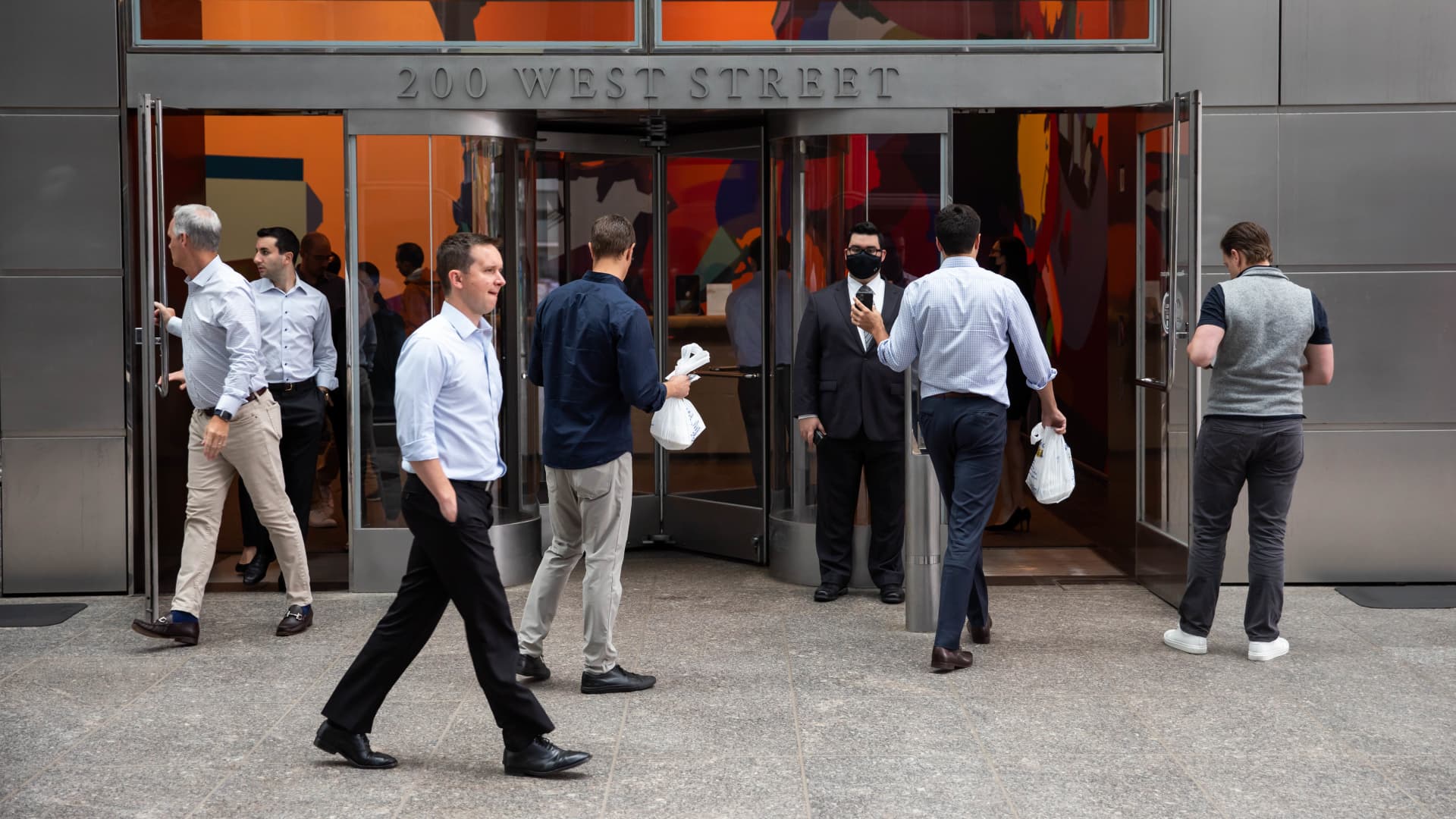
Jamie Dimon may have been off by a year, but New York City’s offices are finally starting to fill up.
In May 2021, the JPMorgan chief executive predicted that the percentage of workers in offices in the city would be back to normal by the following fall. “Yes, the commute, you know, yes, people don’t like commuting, but so what?” Dimon said in his not-so-empathic way at the Wall Street Journal CEO Summit.
As a Covid wave prognosticator and expert on worker psychology, the bank CEO failed. But his view of bringing workers back is getting closer to reality.
Nearly half of office workers (49%) are back in New York City on an average weekday, up from 38% in April, according to the latest data this week from the Partnership for New York City, which has been tracking office occupancy as a vital sign for New York’s economy. Fully remote office worker levels are now down to 16%, from 28% in April.
But as far as making that unwelcome commute again, only 9% of office workers are doing it full time, according to the survey.
Hybrid work is the expectation, and that is not a new finding in the organization’s research, with 77% of employers saying it will be “predominant post-pandemic policy,” due to employee feedback. But the latest data shows that the largest share of employees on a hybrid schedule are in the office three days a week — 37% three days; 12% four days; 15% two days; 11% one day.
Public transit data is showing the increase in returning workers as well. The 3.7 million subway riders daily this week was the most since March 2020, and commuter rails also hit levels in recent weeks not seen since the pandemic began.
“We’re certainly moving in the right direction,” said Kathryn Wylde, president and CEO of the Partnership for New York City, which advocates for large businesses, in an interview on Friday with CNBC’s “Squawk Box.”
When the return to office tipping point will be reached
The tipping point to the majority return to office will be January, according to the Partnership for New York City, with 54% of workers expected in the office on an average weekday by the start of the new year. Even the tech industry, where resistance to return to office has been elevated, is nearing the tipping point. It currently has 47% average daily office attendance, and that is expected to increase to 50% by January.
At a recent dinner, New York City Mayor Eric Adams pleaded with tech leaders to keep jobs in the city.
If the Partnership’s data proves correct, more than half of all office workers will be back either three days (42%) or four days (12%) per week by January. And the percentage of those fully remote will decline further, to 12%.
Wylde conceded it isn’t easy, and worker resistance remains. “Old habits are hard to break, and for two and a half years, people have been working at home, working remotely, and we’ve have had four false starts in getting back to the office.”
But the employer view, as tracked by the organization, is that there won’t be a permanent retreat from office culture in New York. Only 10% of respondents to its survey are projecting a decline in real estate footprint and headcount. Uncertainty about the future remains, but the data shows that the majority (54%) of companies expect office employee numbers to remain at least at the current level, if not move higher, over the next five years. And the majority do not have plans to reduce real estate footprint.
“Employers are not seeing this as a permanent condition or serious problem,” Wylde said.
She rebutted the idea that public safety was the major concern for commuting workers. While those numbers had increased last year, and subway incidents have been alarming, Wylde cited data showing only 24% of workers said there main concern was public safety, “way down” from the response level last year, she said.
But public safety was the second-most cited factor in its research, at 24%, after work from home productivity (36%).
In a finding to Dimon’s liking, only 3% cited length of commute.
Workers are more likely to say they are productive at home, or that friends aren’t being mandated back to the office, “so why should we? We’re seeing resistance to change,” Wylde said. “It’s inertia more than anything else.”
One warning she did have for companies is to not force workers back without a clear plan for “purposeful work” in the office. Office culture and “stickiness” of the office will depend on purposeful activity.
“I had a CEO say to me if someone is going to spend an entire day on Zoom calls, they may as well be at home,” Wylde said.
Even Dimon has come around somewhat, with the bank expecting a significant percentage of its workforce to remain permanently hybrid (40%, according to his latest annual letter to shareholders).
But Wylde sees more commutes into work being more likely than endless Zoom calls.
“I am confident that people will be back,” she said.




